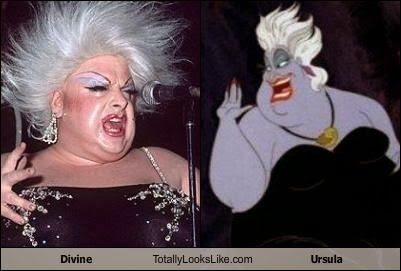As everyone should know by now, I love my grumpy cat. Thus I love this picture. Even moreso because it gave me something else to write about.
The whole Little Mermaid thingy is a pretty massive salepoint for Disney, in fact it might even be its most popular, the ideal Disney princess tale if you will. Thus reading Trites' 'Disney's Sub/Version of Andersen's "The Little Mermaid"' (in conjunction with reading the actual Andersen original because I'm a diligent student...) was a real eye-opener. It was practically a lesson in commodification. And I love that.
As many or at least a few of you will know, Andersen's tale 'Den Lille Havfrue' was one of pedagogics and moral instruction. It was about the cost of making a rash decision and the importance of religion or at least belief. It's a pretty epic story, so you can read it here. Basically, it was all about teaching its readers to think through their decisions and, if they are to make a mistake, take it graciously and accept full responsibility, because good things will arise from one's humility. The depth and insight of this story is embodied in the gaze of the statue of the same name which rests on the shore of Copenhagen's harbour.
Den Lille Havfrue
In contrast, Trites points out the shear questionability of the lessons of Disney's version. Trites comments that Disney's film changes the focus of the story to materialism in a number of senses. Gone is the notion of 'true love' that Andersen's mermaid pursued. It has been replaced with a definition of true love as being a kiss. Great, really deep Disney... In addition, Ariel is portrayed as what DIsney wants to portray as the pinnacle of beauty - very thin hips and an hourglass figure, while the even Ursula looks like a ball... with octopus legs... Furthermore, Disney seems to convey the message that a woman (Ariel) can only achieve fulfillment through a man and marriage without any other way. Andersen, in contrast, suggests that a woman can find fulfillment and salvation in her own actions and choices. Andersen wrote in 1837, predating feminism by a long time. Disney wrote in the late 20th century, the heyday of feminism. Really empowering Disney...
Quick side note: Ursula's character was based on the drag queen performer Divine:
Similar no???



No comments:
Post a Comment